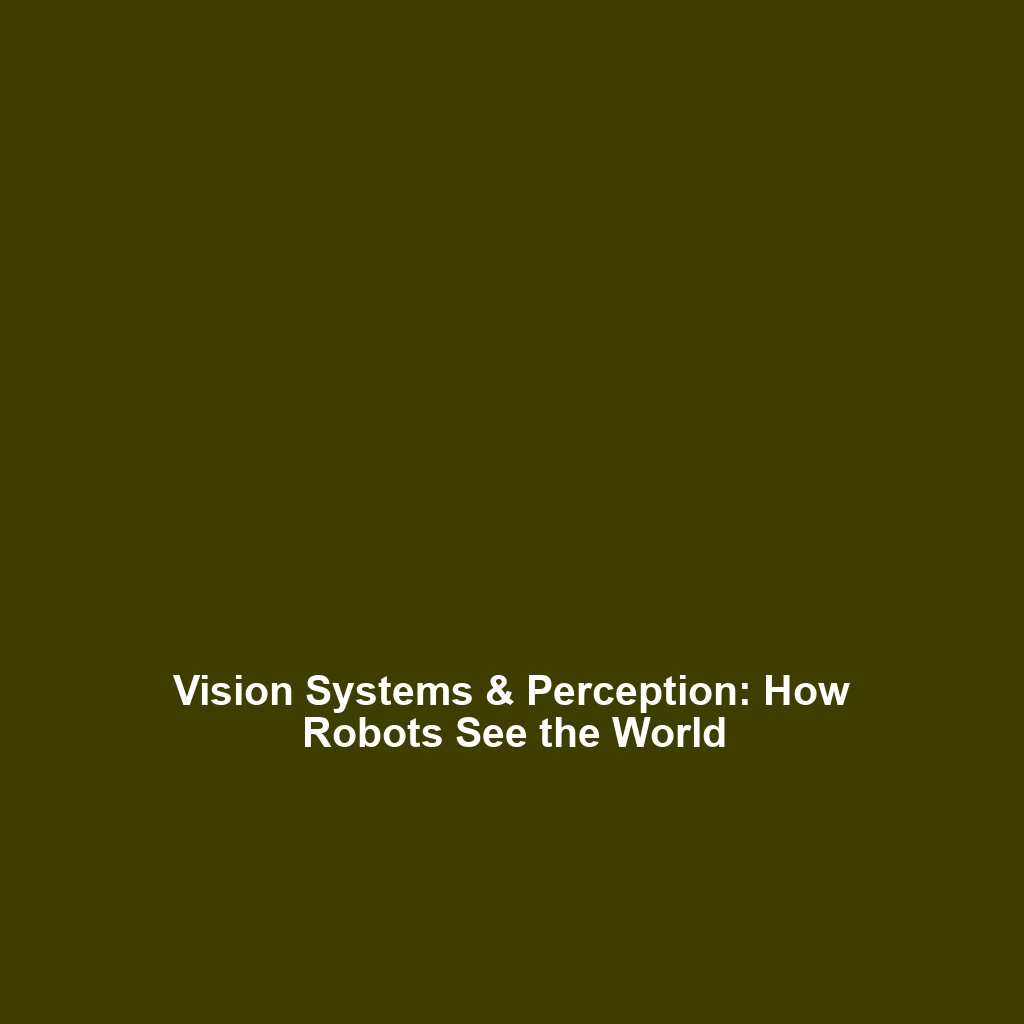Vision Systems and Perception: How Robots “See” and Interpret the World
Autonomous robots integrate sophisticated technology to navigate and interact with their environment, and at the heart of this intelligence is their ability to perceive the world. Vision systems and perception technologies enable these machines to “see”—an essential feature that drives their decision-making processes and actions. Understanding how robots interpret visual information is critical in advancing autonomous technologies across various domains, from manufacturing to healthcare.
Key Concepts of Vision Systems and Perception
Vision systems in robotics are designed to analyze visual data from the environment, allowing machines to identify, classify, and respond to objects or changes in their surroundings. The key concepts that underpin these systems include:
- Image Acquisition: Robots collect visual information through cameras and sensors, mimicking human sight.
- Data Processing: Advanced algorithms process images to extract meaningful features and patterns.
- Machine Learning: Robots apply machine learning techniques to improve their recognition capabilities over time.
- 3D Reconstruction: This involves constructing three-dimensional models from two-dimensional data to better understand spatial relationships.
These concepts are pivotal in enhancing the ability of autonomous robots to operate in complex environments, enabling them to perform tasks that require accurate perception and real-time processing.
Applications and Real-World Uses
The applications of vision systems and perception in autonomous robots are vast and transformative. Notable uses include:
- Industrial Automation: Robots equipped with vision systems can identify defects in products on assembly lines, ensuring quality control.
- Self-Driving Vehicles: Autonomous vehicles utilize advanced perception to navigate roads, identify obstacles, and make driving decisions.
- Surveillance Systems: Robots with visual capabilities monitor areas for security purposes and detect anomalies in real time.
- Healthcare Robotics: Robots assist in surgeries by recognizing surgical instruments and following precision movements.
These applications demonstrate how vision systems and perception are critical to enhancing the functionality and reliability of autonomous robots.
Current Challenges in Vision Systems
Despite advancements, there remain significant challenges in developing effective vision systems for autonomous robots. Some of these challenges include:
- Environmental Variation: Changes in lighting and weather conditions can affect the accuracy of visual data.
- Object Occlusion: When objects block each other, robots may struggle to identify and interpret the situation correctly.
- Computational Complexity: Processing large amounts of visual data in real-time requires substantial computational power.
- Data Bias: Machine learning models can inherit biases from the data they are trained on, leading to misjudgment in unfamiliar situations.
Future Research and Innovations
Looking ahead, numerous breakthroughs are anticipated in vision systems and perception technologies for autonomous robots. Key areas of research include:
- Neuromorphic Computing: This approach aims to mimic the human brain’s neural structures, potentially revolutionizing how robots process visual data.
- Enhanced Machine Learning Models: Development of more robust algorithms that can adapt to diverse environments and tasks is underway.
- Integration of Multi-sensory Data: Combining visual information with other sensor data (like sound and touch) to improve situational awareness.
- Quantum Computing: Future advancements in computing could lead to quantum solutions for processing complex visual scenarios more efficiently.
Conclusion
In summary, Vision Systems and Perception play an integral role in enabling robots to “see” and understand their surroundings, significantly impacting the field of Autonomous Robots. Continued research and innovation in these areas promise to enhance robot capabilities, making them more reliable and efficient across various applications. Explore more about Autonomous Robotics and their cutting-edge applications.
